Cheap tech vs expensive gear: affordable alternatives you should look out for
Why splash the cash when you can slash the price tag?

Tech sites can seem designed to make you want to spend more money. "Look at all that curved glass, check out those cutting-edge CPU cores!" And and so on.
However, we’re actually realists. We want you to get a good deal, not just a fancy-looking expensive hardware whose shine fades as you get used to the thing. Or literally fades after spending a week in a change-filled pocket.
That’s why we love the brands that get you 90 per cent of the quality for 50 per cent of the price. After all, not everyone can afford to kit their house out with Apple computers, OLED TVs and enough smart home gear to make the place borderline sentient.
We’re going to look at the gadgets and brands that get you that golden high-performance, low-price combo, as well as what you miss out on when you don’t spend a small fortune on every piece of tech you buy. Let’s break it down.
Cheap 4K TVs vs pricey ones
What often separates cheaper TVs from expensive ones are the pricey technologies designed to get the more trigger-happy among us to fork out for a new TV even if the old one still looks fine. However, that’s not entirely the case at the moment
The most famous recent TV tech of the lot, 4K, is no longer expensive. Pixels are cheaper than chips these days, so you don’t need to spend big to get a pin-sharp picture.
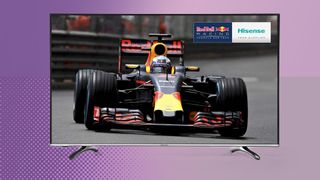
So are smart TV services. Only bottom-rung models leave out Wi-Fi and streaming platforms like BBC iPlayer, so even bargain 4K TVs like the Hisense H43M3000 look sharp as anything and let you get connected.
Get daily insight, inspiration and deals in your inbox
Get the hottest deals available in your inbox plus news, reviews, opinion, analysis and more from the TechRadar team.
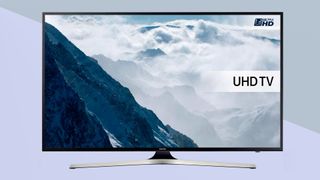
A lot of cheaper TVs even have HDR support, such as the Samsung UE40KU6020. This is the latest TV tech. It stands for high dynamic range, and aims to have the same sort of picture quality effect you see when you use the HDR mode on your phone camera: more in the darkest and lightest areas, and better color.
Cheaper TVs can almost have it all these days. Almost.
What you miss out on with a cheaper TV are the improvements that can turn a set into a cinema-beater. These have more to do with contrast than the sharpness of the picture, which is often the first way people “see” image quality.
OLEDs like the LG 55E6V can make the black parts of a scene truly black, which is harder than it sounds. All cheap TVs use super-bright LEDs that fire across the screen from the side, and trying to block it all out when you’re dealing with one of the many starry scenes in Gravity is just about impossible. OLEDs have individual light-up pixels, so it’s no problem.
OLEDs make movies look great in a dark room, with greater contrast that even a top quality cinema screen. In the other corner, top LCDs like the Samsung KS9500 gun for brightness of over 1000 nits, which is what you need to attain UHD Premium status, rather than pure blacks.
This is the kind of brightness that sears eyeballs and makes HDR footage look amazing. More expensive TVs will also generally have better motion handling, making camera pans look smoother and fast scenes less confusing, particularly those of deliciously meat-headed action films.
Cheaper TVs are not the sort of “oh well, it’ll do” travesties they used to be, though, and tend to look perfectly good if you watch with the living room lights on. You might want to avoid the very cheapest sets from now-prestige brands like Seiki and Bush, mind, particularly now that fairly large sets from Sony and Samsung aren’y hugely expensive. These tend to be rebranded Chinese OEM TVs that pay little attention to picture processing. But again, even these are far better than they were five years ago.
Cheap tablets: the good and bad
Tablets also benefit from the 4K TV effect of pixels being so cheap to cram in these days. While there’s still an army of low-res 1280 x 800 pixel Android tablets at around the £100 mark, spend a bit more and you’ll find ones that are shaper per square inch than a £729/$749/AU$849 iPad Pro.
The Asus ZenPad S Z580C is a top pick, getting you the same resolution as top iPads for just £150/$159/$250. Asus’s custom Android software is a taste you may not acquire, but you can always paste over it with the standard Android UI just by downloading the Google Now Launcher app.
This is a tablet that doesn’t feel like it misses out on much even compared to a more pricey alternative.
If you have to stick to a much tighter budget, there are plenty of options too, although you are better off staying away from big names like Samsung. Their tablets are perfect if you have a wallet full of cash to spend, but not pocket money.

The soft landing pad at the bottom of the tablet market is the Amazon Fire range. Amazon’s cheapest tablet is surprisingly useful, and doesn’t feel like it’s going to fall apart after three months like some ultra-budget tablets we’ve tried over the years.
Spend an extra wad of cash and the Fire HD 8 nets you the sort of tech you’d have to pay almost three times as much for from one of the other leading tech brands. An 8-inch screen, 16GB storage and a processor fast enough to make higher-end Android games run well add up to unbeatable value for money.
There’s one caveat: Fire tablets are so cheap because they’re effectively subsidised to push Amazon services like Audible, the Kindle book store and Amazon Music. They rule the interface, giving you less control over the feel of the tablet than a normal Android, and making the tablet feel like it’s jammed full of ads.
Repelled? The convincing alternatives you don’t have to import from China come from Lenovo.
The Lenovo Tab 3 range features several models at almost Amazon Fire-matching prices, the cheapest a 7-inch 1200 x 600 tablet Lenovo Tab3 7. The step-up model, with an 8-inch 1280 x 800 pixel screen costs just a little more. It’s a direct rival to the Amazon Fire HD 8, but one without ad-laden software.
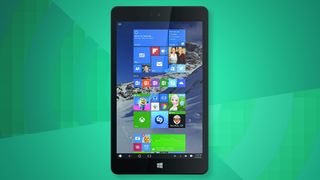
If you don’t fancy Android at all, the Linx 1010 and Linx 810 are rock-bottom Windows 10 tablets that, as their names suggest, have 10-inch and 8-inch screens. Unlike cheap Windows tablets from the old days, these Linx models run full Windows 10 Home, meaning you can have a crack at anything you would do on a laptop.
Keep your expectations realistic, though. They have entry-level Intel Atom CPUs, so aren’t going to feel as fast as an Intel Core i CPU machine. But at a fifth of the price, should we really complain?
If only Apple will do, there are no easy ways to get a bargain, brand new iPad. Sorry. However, do check out the refurbished section of the Apple Store. The savings are significant and as Apple’s refurb process involves giving tablets a new casing and a new battery, they’re indistinguishable from the ones you’d buy on the high street.
The route to a cheaper phone
A general rule of tech gadgets: the more competition there is, the more bargains you’ll find. And competition in phones is even fiercer than among tablets.
If you’re a TechRadar regular, you may not be surprised to hear us mention the Motorola Moto G series as a top budget buy. Since 2013 this has been an easy-to-recommend range for anyone after a SIM-free bargain.
The Moto G4 is a classic example of a phone that gets you 90 per cent of the experience of a top-end flagship phone for a quarter of the price. Its screen is good, the camera is decent and it’s fairly fast. What’s not to like?
There’s a good chance you know about this one already, though.
The Wileyfox Swift 2 is a little more exotic, with a slim metal casing that could trick a few bystanders into believing you spent a lot more. Its screen isn’t as good as the Moto G4’s, though, so choose carefully.
If you have no fear, you can also try one of the many Chinese brands most people have never heard of. Doogee, Xiaomi, Elephant and Cubot are all very popular in other countries, much as you won’t find then on the high street outside a slightly shady second hand electronics retailer.
Xiaomi is perhaps the highlight of the lot, once called the Apple of China. The Xiaomi Redmi 4, for example, gets you a 5-inch 1080p screen, 13-megapixel camera, 32GB storage and a fairly powerful Snapdragon 625 CPU for around £150/$181/ AU$250. Beat that.
With Apple and Samsung adding periphery features like dual cameras or upscaling their hardware designs to justify their sky-high prices, you can save big if you shed your brand loyalty and look a little further afield.
Save more on cheap laptops
Next up, let’s save some money on your next laptop. This is all the more important now that heading-grabbers like the MacBook Pro and HP Spectre 13 are pant-wettingly expensive.
We’re going to look into what you really need and pinpoint the best deals you can get. But first, let’s look at the laptops that get you a MacBook-a-like experience at half the price or less.
The HP Envy 13, Asus UX310UA and Acer Aspire S 13 are all slim, light and are part or all-aluminium, yet cost half the price of most MacBook options. With super-fast SSD storage, Intel Core i CPUs and IPS screens, they get almost ridiculously close to the day-to-day experience of laptops twice the price.
You’ll may lose a little color saturation in the display, add 100g or so of weight and miss out on some design gloss, but you still get a laptop light enough to take anywhere and powerful enough to handle most needs.
But if you’re reading this, there’s a good chance you don’t have that much to spend either.
If you want to run a full Windows machine and your budget is tiny, you can’t go wrong as long as you steer clear of Intel Atom machines. They tend to feel slow where a Core i3 computer can seem as fast as a Core i7 most of the time.
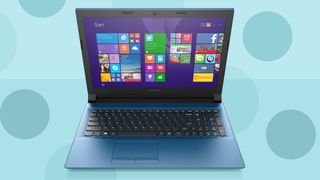
Check out the Lenovo Ideapad 305 and HP 250. They are solid everyday laptops that cost around £300 / $375 / AU$500. What you miss out on here is wake-up responsiveness of an SSD as they use hard drives, and the pretty/slim combo of a style laptop.
If you’re desperate for a laptop that won’t give you backache, but your ability to spend several hundred notes seems as distant as your chances of supporting Beyonce on her next tour, there is some hope. Ultra-cheap Windows 10 machines don’t run particularly well but Chromebooks certainly do.
These run Chrome OS, a Google operating system that’s a bit like a version of Android made for laptops. When it first arrived, Chromebooks weren’t much use unless they were connected to the internet, but offline apps now let you use one like a normal laptop.
For within a budget price bracket you can get a metal Chromebook that feels like a stylish machine that might cost three times as much if it ran Windows. The Acer Chromebook 14 and 11, Asus Chromebook C300SA and semi-rugged (but less pretty) Lenovo N22 are all worth a look.
Chromebooks won’t let you run advanced programs or PC games, but they’re hard to beat if you’re hard-up.
Wireless audio on the cheap
Switching gears a bit, let’s look at how you can get connected audio for your home without spending big. Multi-room master Sonos has actually had a hand in this when it released the (for Sonos) very affordable Play:1 speaker, making this kind of kit accessible for a whole new section of the population.
Even cheaper, Jam Audio’s Rhythm costs just £69.99 (around $87 / AU$117) at the time of writing and offers similar Wi-Fi-based wireless audio and an app that lets you control a whole family of the speakers spread across your house. Sound quality isn’t quite at Sonos Play:1 level, but it is solid, suitable for replacing an old Hi-Fi rather than just being good enough to listen to a tune or two while you make a cup of tea.
If you already have a main Hi-Fi that’s not going to be binned in favor of a wireless system, you’d be mad not to consider a fully portable Bluetooth speaker instead, too. The best small cylinder models these days can fill small rooms with ease, not to mention be used on-the-go too, unlike a Sonos setup.
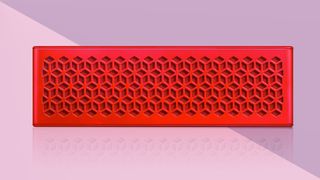
Former king of PC soundcards Creative makes a great small speaker called the Muvo Mini.
It sounds good enough and is loud enough for all kinds of casual listening. As with all our bargain picks, the key is to stop obsessing over the brand and think about what you actually need, rather than what ads tell you to want.
- Check out our full guide to all the best deals from Black Friday
Most Popular


